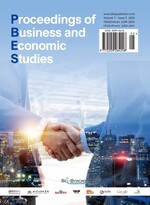Abstract
The stock market is a vital component of the broader financial system, with its dynamics closely linked to economic growth. The challenges associated with analyzing and forecasting stock prices have persisted since the inception of financial markets. By examining historical transaction data, latent opportunities for profit can be uncovered, providing valuable insights for both institutional and individual investors to make more informed decisions. This study focuses on analyzing historical transaction data from four banks to predict closing price trends. Various models, including decision trees, random forests, and Long Short-Term Memory (LSTM) networks, are employed to forecast stock price movements. Historical stock transaction data serves as the input for training these models, which are then used to predict upward or downward stock price trends. The study’s empirical results indicate that these methods are effective to a degree in predicting stock price movements. The LSTM-based deep neural network model, in particular, demonstrates a commendable level of predictive accuracy. This conclusion is reached following a thorough evaluation of model performance, highlighting the potential of LSTM models in stock market forecasting. The findings offer significant implications for advancing financial forecasting approaches, thereby improving the decision-making capabilities of investors and financial institutions.
References
Kilic DK, Ugur O, 2018, Multiresolution Analysis of S and P500 Time Series. Annals of Operations Research, 260(1): 197–216. https://doi.org/10.1007/s10479-016-2215-3
Li P, Jing C, Liang T, et al., 2015, 2015 2nd International Conference on Information Technology, Computer, and Electrical Engineering, October 16–18, 2015: Autoregressive Moving Average Modeling in the Financial Sector. ICITACEE, Semarang, 68–71. https://doi.org/10.1109/ICITACEE.2015.7437772
Zhang G, Zhang X, Feng H, 2016, Forecasting Financial Time Series Using A Methodology Based on Autoregressive Integrated Moving Average and Taylor Expansion. Expert Systems, 33(5): 501–506. https://doi.org/10.1111/exsy.12164
Kaastra I, Boyd M, 1996, Designing A Neural Network for Forecasting Financial and Economic Time Series. Neurocomputing, 10(3): 215–236. https://doi.org/10.1016/0925-2312(95)00039-9
Lendasse A, de Bodt E, Wertz V, et al., 2000, Non-Linear Financial Time Series Forecasting – Application to the Bel 20 Stock Market Index. European Journal of Economic and Social Systems, 14(1): 81–91. https://doi.org/10.1051/ejess:2000110
Mandic DP, Chambers JA, 2001, Recurrent Neural Networks for Prediction: Learning Algorithms, Architectures and Stability. John Wiley & Sons, Inc., Hoboken (NJ).
Hochreiter S, Schmidhuber J, 1997, Long Short-Term Memory. Neural Computation, 9(8): 1735–1780. https://doi.org/10.1162/neco.1997.9.8.1735
Chen K, Zhou Y, Dai F, 2015, 2015 3rd IEEE International Conference on Big Data, October 29 – November 1, 2015: A LSTM-Based Method for Stock Returns Prediction: A Case Study of China Stock Market. IEEE, Santa Clara, 2823–2824.
